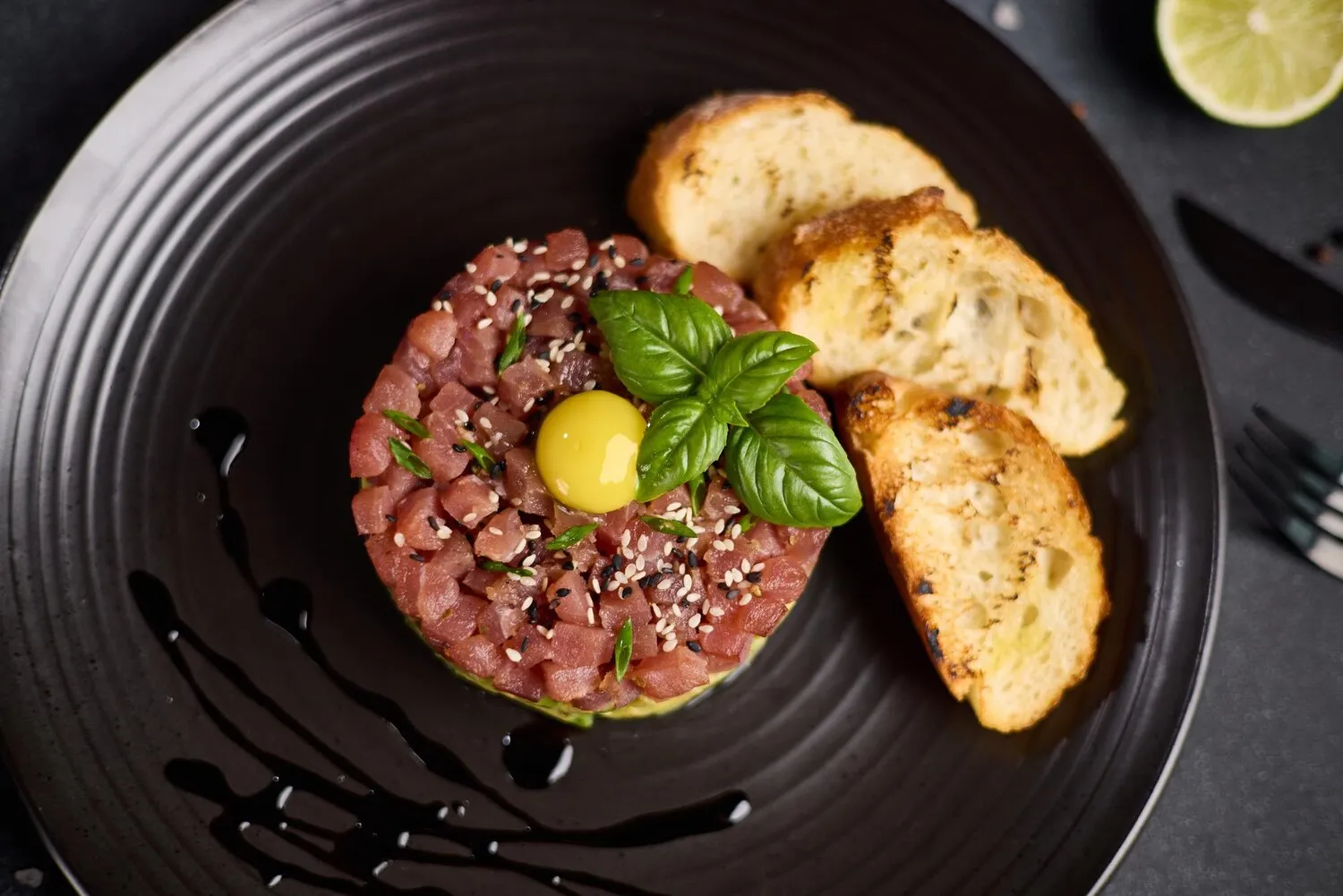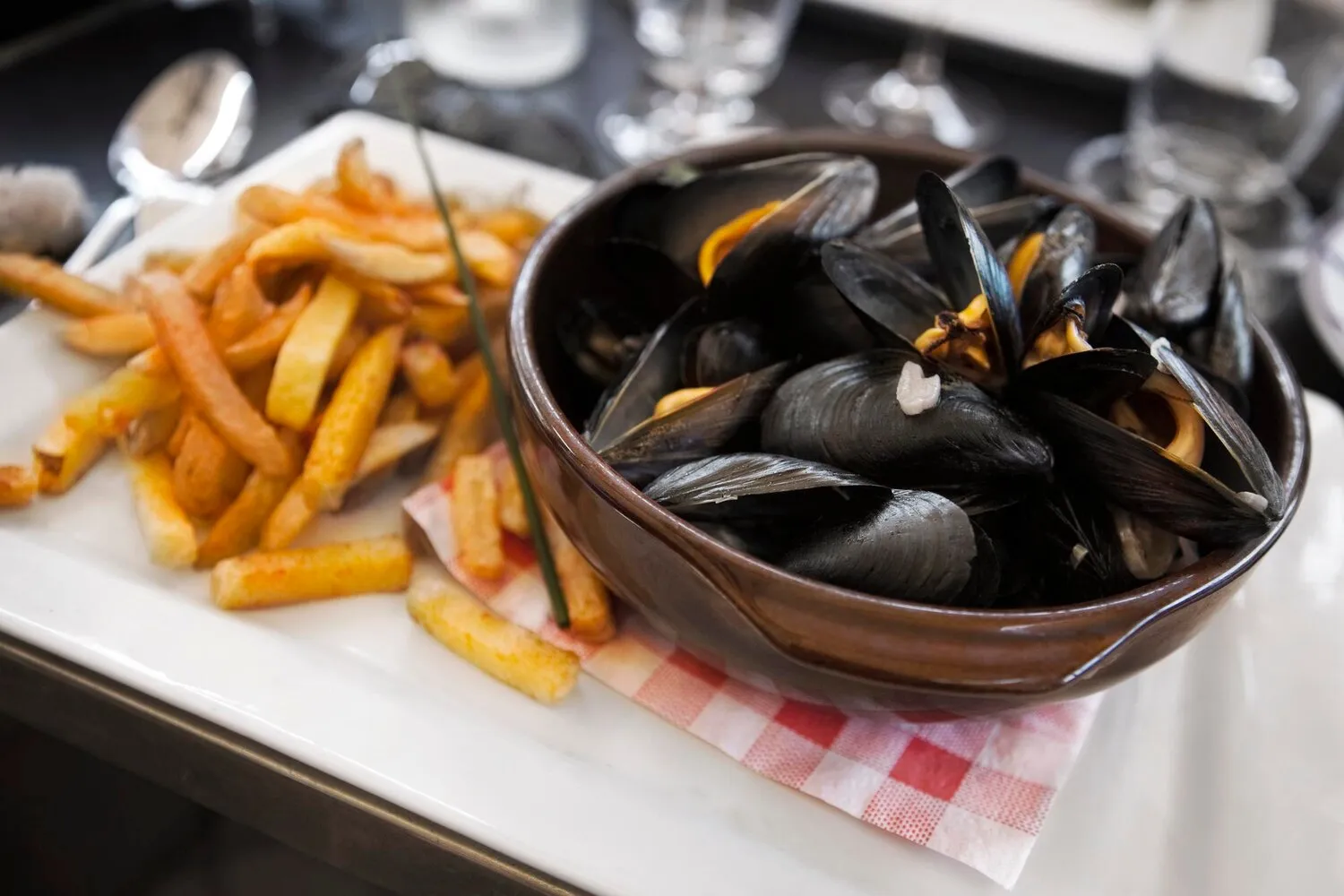
Steak Tartare
Raw minced beef, traditionally served with egg yolk, onions, capers, and various seasonings.
Nutrition Facts
* The % Daily Value (DV) tells you how much a nutrient in a serving of food contributes to a daily diet. 2,000 calories a day is used for general nutrition advice.
While the exact origins are debated, the dish's name is attributed to the Tartars, a nomadic people of Central Asia. Legend claims they tenderized meat by placing it under their saddles. However, modern steak tartare likely evolved from 19th-century French restaurants, influenced by dishes like 'beef à la américaine'.
Steak tartare is often seen as a sophisticated and adventurous dish, associated with fine dining and a willingness to explore unconventional culinary experiences. It's a testament to the quality of ingredients and the skill of the chef.
Dining Experience
Steak tartare is typically served as an appetizer or a light meal in upscale restaurants. The presentation is important, and it's often prepared tableside.
Trust and Freshness
Enjoying raw meat requires trust in the restaurant's sourcing and handling practices. Freshness is paramount for both taste and safety.
Regional Variations
While the French version is considered classic, many variations exist around the world, with different seasonings and accompaniments reflecting local tastes.
Steak tartare boasts a complex and savory flavor profile, characterized by the richness of raw beef balanced by sharp, acidic, and spicy elements.
The raw beef provides a melt-in-your-mouth texture and a clean, meaty taste. Common seasonings include finely chopped onions or shallots for pungency, capers and cornichons for saltiness and acidity, mustard for a sharp bite, Worcestershire sauce for umami depth, and egg yolk for creaminess and richness. Fresh herbs like parsley or chives add brightness. Hot sauce or freshly ground pepper can be added for heat. The resulting flavor is a layered experience that is both savory and refreshing.
Sourcing the Beef
Use the highest quality, freshest beef possible. Ask your butcher for a cut suitable for raw consumption, such as tenderloin or sirloin, and specify that it's to be eaten raw. Ensure it's from a reputable source.
Proper Handling
Keep the beef cold at all times. Prepare the tartare just before serving to minimize bacterial growth. Use clean utensils and surfaces.
Balancing Flavors
Taste as you go and adjust the seasonings to your preference. The key is to balance the richness of the beef with acidity, spice, and salt.
Serving Suggestions
Serve steak tartare immediately after preparation. It's traditionally accompanied by toasted bread, baguette slices, or pommes frites (French fries). A green salad can provide a refreshing contrast.
Explore additional Classic European dishes and restaurants
Explore Classic EuropeanDiscover top dining spots and culinary experiences in London.
Explore LondonLearn more about the food culture, restaurant scene, and culinary heritage of UK.
Explore UK
